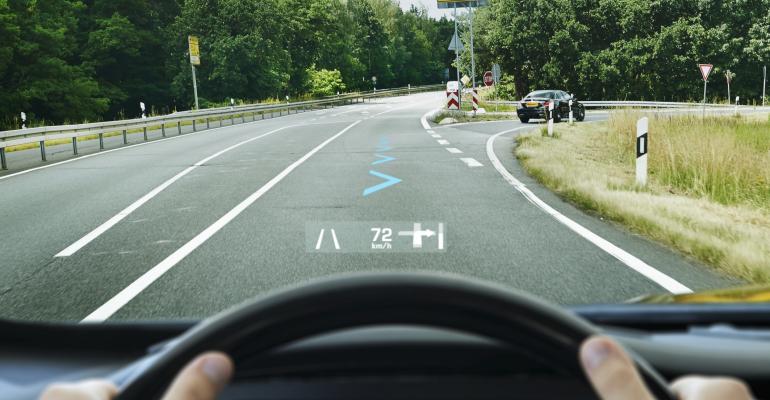Connectivity is approaching commodity status in cars.
It’s only a matter of time before features such as park assist, forward-collision warning and blindspot monitoring become standard on most models. Autonomous driving is looming in the rearview mirror.
As technology originally offered only in premium segments becomes widespread, the so-called human-machine interface will become a car’s trademark. The battleground of the future for automakers will be creating a unique driver-vehicle interaction experience.
“How a car interacts will become a brand-image item,” Brian Droessler, vice president-software and connected solutions at Continental Automotive Systems, tells WardsAuto. “It will be an area where we see automakers differentiate” themselves.
Human-machine interface, or HMI, covers a wide swath of driver experience, from the way interconnectivity and safety features interact with the driver to the actual look, touch and feel of a car’s interior.
Droessler points to the evolution of navigation systems as an example of what the future holds for HMI. As navigation systems became standard in many vehicles, consumers started to voice opinions about how chatty some nav systems were, the accent of the voice giving directions, whether the system mentioned points of interest on the route and many other features related to how the driver interacts with the system.
Advanced safety systems will follow the same path, Droessler says. Consumers will expect advanced safety features to be more or less standard, and start to ask, “What is the feeling I have when I get in (the car) and plan my journey?” Once the car takes over the task of driving, the transition to allow the human driver to take control again also will be unique.
“How the car interacts will become a branded experience,” Droessler says. “It supports what kind of car you are in, and what price-level car you purchase.”
He sees “holistic connectivity” – an environment where the car seamlessly networks with the driver, other vehicles, the Internet, infrastructure and mobile devices – as an area that will separate brands.
The definitive areas are the quality of the link to the cloud; a head-up display with augmented reality and an interior camera that watches the driver and responds to, say, a nodding head indicating the driver is falling asleep. Continental is working on all these areas.
Even within one automaker’s portfolio, the HMI experience will differ between a mass-market and premium vehicle, Droessler says. The underlying technology will be the same, but the mass-market brand might not offer a standard interior camera or HUD, for example.
HMI Rock Stars
At its most basic, HMI involves anything happening on the dashboard of a car and the way the control switches feel or move, or even the way a knob or switch sounds when it is used – if it even makes a sound. Those myriad small things “may seem arcane, but they are very important to the consumer,” says Ian Beavis, chief strategy officer at consultancy AMCI.
In this area, interior designers will become the rock stars of HMI, he says. Automakers must have a well-defined understanding of their brand and ensure the flow of the controls in a car reflects that brand, Beavis says.
Thilo Koslowski, vice president and automotive practice leader at Gartner, argues interior designers will be only players in the rock band where HMI branding is concerned.
HMI “is truly one of the converged areas where design has to collaborate with technology and engineering and IT,” he says. “The car could become cooler than any of the digital devices out there.”
He mentions Volvo’s Concept 26 as an example of an automaker starting to realize the HMI branding possibilities.
Concept 26, which Volvo introduced at the Los Angeles auto show, is a three-mode autonomous driving system that allows the driver to decide how much he or she wants to control the drive versus letting the car take over. It is an area where automakers can truly innovate, Koslowski says.
Delphi also sees HMI as an area where automakers can innovate. The discussion these days is about how the user experience in connected cars can be made safer, says Kathy Winter, vice president-software and services business MyFi advanced engineering at Delphi Electronics and Safety.
“There are almost endless ways you can talk to your car in a safer way,” including gesture, voice control and touch, Winter tells WardsAuto.
Cars will have safety features that are continuously updated over the air the way mobile phones are now, she says. That will allow a vehicle to know, for example, when a driver is entering a construction zone. The car will turn down the volume of an infotainment system so the driver more closely concentrates on the road.
At the Consumer Electronics Show in Las Vegas in January, Delphi will showcase next-generation user experiences for the whole vehicle. They will envision “how you can potentially interact not just with your infotainment systems but the entire vehicle itself as we move forward into automated driving,” Winter says.





